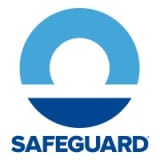This informal CPD article, ‘Accurate diagnosis: The key to damp remediation’ was provided by Safeguard Europe, a UK-based company specialising in providing damp-proofing and waterproofing solutions for the construction industry.
Dampness in buildings comes in many forms, but the symptoms can all seem the same to the untrained eye. Mould growth, musty odours, damp stains and blistered wallpaper are all common warning signs of a bigger problem, but diagnosing the underlying cause is harder to spot.
There are many potential causes of dampness, including:
- Groundwater
- Wind-driven rain
- Internal/external leaks
- Flooding
Each source is linked to a different form of damp, all with unique remediation methods. The first step to a damp-free property is to correctly identify the primary cause of dampness and resolve it.
Learn to use your senses
The first step to damp remediation is to find the damp’s root cause through examination. While there are many tools available to detect damp such as moisture meters, our eyes and ears are our most valuable tools.
Check externally:
- Timbers including windows and doors
- Rainwater goods and valleys
- Chimneys and flashings
- Condition of brickwork, stone, mortar, plinths, render, weatherproof finish
- Flat roofs (if present)
- High ground levels (if present) such as abutting garden walls, steps and the position and integrity of any DPC system
Check internally:
- Visible damp on walls, floors or ceilings
- Signs of salt efflorescence
- Mould growth
Keep in mind that the above is not a definitive list but is merely a starting point for places to inspect. Remember: every building is unique, and so every instance of dampness is unique too.
Knowing what the signs mean
Now that you’ve correctly established the route of moisture into the building, you can diagnose the cause.
There are three major types of dampness in buildings:
Condensation
We’ve all experienced excess condensation in our homes. When warm air containing moisture hits a cold wall, the air temperature near the wall cools. As cool air holds less moisture, the moisture condenses into liquid water onto the wall. On impermeable surfaces like glass windows or kitchen tiles, condensation forms as surface droplets. On permeable surfaces like wallpapered walls, it can cause damp patches. Condensation encourages mould growth.
Condensation forms on the coldest areas of a wall, so it is easy to misdiagnose it as another, more severe form of dampness. For instance, condensation on the lower band of a wall may look like rising damp internally — correct external examination will rule it out.
Penetrating damp
Penetrating damp occurs when external moisture enters an unprotected or damaged building through the walls or roof. Wind-driven rain is the most common cause, and so homes in coastal or elevated areas are most vulnerable. Externally, visible dampness and biological growth across the wall’s surface could be signs of penetrating damp. Exacerbating factors such as broken sections of guttering will worsen the damage.
To confirm penetrating damp, look for internal signs of damp at the same position on the external wall. Masonry defects such cracked brickwork or mortar are tell-tale signs of a building vulnerable to penetrating damp.
Rising damp
Groundwater rising through brick and mortar walls causes rising damp. Building Regulations Part C requires all new-builds to have a functioning Damp-Proof Course (DPC), but homes built before the 20th century may still lack them. Look for dampness on the lower sections of the interior wall, sometimes alongside ‘tidemarks’ of salt deposits. Externally, lower damp patches will also be visible. Groundwater dampness can erode brickwork over time.
Rising damp is usually present in buildings without a DPC or in situations where the DPC has been bridged, usually by a raised ground level from a new installation such as garden decking. Remember, only groundwater can cause rising damp.
We hope this article was helpful. For more information from Safeguard Europe, please visit their CPD Member Directory page. Alternatively, you can go to the CPD Industry Hubs for more articles, courses and events relevant to your Continuing Professional Development requirements.













